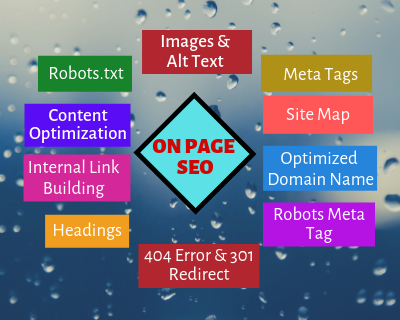Competitor's analysis is the most priority part for SEO Websites. This analysis can improve your marketing strategies and also increase website results in SERPs. By using, competitor's analysis you can find the strengths, weaknesses, opportunities and threats of your website.
Competitor's analysis is nothing but identify your competitor's websites and evaluating their present and past strategies to determine the strengths and weaknesses relative to your own product or service.
Types of Competitors:
1. Direct - A company or organization promoting the same products and services to improve sales within the same market.
2. Indirect - A company or organization promoting the different categories of products and services but they are in the same industry and same market. For example, a cafe and restaurant are in the same city are indirect competitors.
3. Replacement - A company or organization promoting the products and services that are in a different industry that could be used as a substitute of your products. For example, a restaurant and supermarket in the same city.
4. Potential - A direct, indirect or replacement competitor that currently has no sales in your markets. For example, a popular cosmetic company in Europe but no sales is the US represents a potential competitor for American cosmetic company.
5. Future - A company or organization that has the best business standards that would allow them to quickly take market share if they entered your markets. For example, a large business company may be perceived as a competitor of a smaller business company even if they have not entered their market yet.
Important points to analyze Competitor's Website
1. Who is your Competitor's: Generally, the sites which are in rank well for your keywords are your competitors. The simple way of finding out your competitors is to search your keywords in google and look for the site which is top in the results page.
2. Visit competitor's site: You can make a list of competitors websites and visit their pages how much they are professional in quality of content, quantity, dynamic or stable, keywords etc. This helps you to put efforts on your website to make your site top of your competitor's website.
3. Check Competitor's backlinks: On competitors backlinks, you need to find out their number, origin, and anchor text etc. If there are getting backlinks from popular sites you can contact their webmasters to get backlinks from them. Backlink analysis tools are backlink anchor text analysis and backlink summary.
4. Competitor's social media: Nowadays social media is extremely used to get more traffic to your website. Facebook and Twitter are the two important Social networking sites. Visit competitor’s social media pages and check their quality content and their popularity.
And also look for some important points to analyze a competitor's website.
1. What products or services do they sell and check each competitor's market share?
2. What are their past strategies and current strategies?
3. What type of media are they used to promote their products or services?
4. How long every week do they buy to promote through the media utilized in this market?
5. What are each competitor's strengths and weaknesses?
6. What potential threats do your competitors pose?
7. What potential opportunities do they make available for you?
There are many tools to analyze a competitor's website. These tools are based on SEO metrics and easy to use. Some of the popular tools are listed below
1. SEMrush
2. Ahrefs3. Moz bar
4. Buzzsumo
5. Similar web
6. Feedly
7. Social blade
8. Phlanx
9. Sprout social
10. SpyFu
11. Quick Sprout
12. Alexa
13. Google advanced search operators
14. Site liner
15. Keyword competitor
16. Social Mention
17. Rank signals
18. Data for SEO








9 Comments
Uşak
ReplyDeleteAnkara
Adıyaman
Hatay
Şırnak
L2FQ
elazığ
ReplyDeletebilecik
kilis
sakarya
yozgat
2L5TD
whatsapp görüntülü show
ReplyDeleteücretli.show
Y2GF
görüntülü.show
ReplyDeletewhatsapp ücretli show
JT2
1A8B3
ReplyDeleteDiyarbakır Görüntülü Sohbet Ücretsiz
ücretsiz sohbet odaları
Hatay Canli Sohbet Chat
Mersin Telefonda Kadınlarla Sohbet
burdur en iyi ücretsiz sohbet siteleri
batman en iyi rastgele görüntülü sohbet
kayseri bedava sohbet odaları
izmir görüntülü sohbet canlı
ücretsiz sohbet
B3AD3
ReplyDeleteIstanbul Mobil Sohbet Et
balıkesir rastgele sohbet
sesli sohbet odası
Bilecik Telefonda Rastgele Sohbet
Diyarbakır Canlı Sohbet Bedava
malatya sesli mobil sohbet
antep görüntülü sohbet siteleri ücretsiz
Nevşehir Canlı Sohbet Siteleri
kocaeli canlı sohbet odaları
B6149
ReplyDeleteCaw Coin Hangi Borsada
Kripto Para Nasıl Alınır
Binance Referans Kodu
Periscope Takipçi Hilesi
Görüntülü Sohbet Parasız
Sohbet
Lunc Coin Hangi Borsada
Instagram Takipçi Hilesi
Trovo Takipçi Hilesi
047832DBA1
ReplyDeleteşov
steroid satın al
cialis
2A044D6708
ReplyDeletetwitter türk takipci